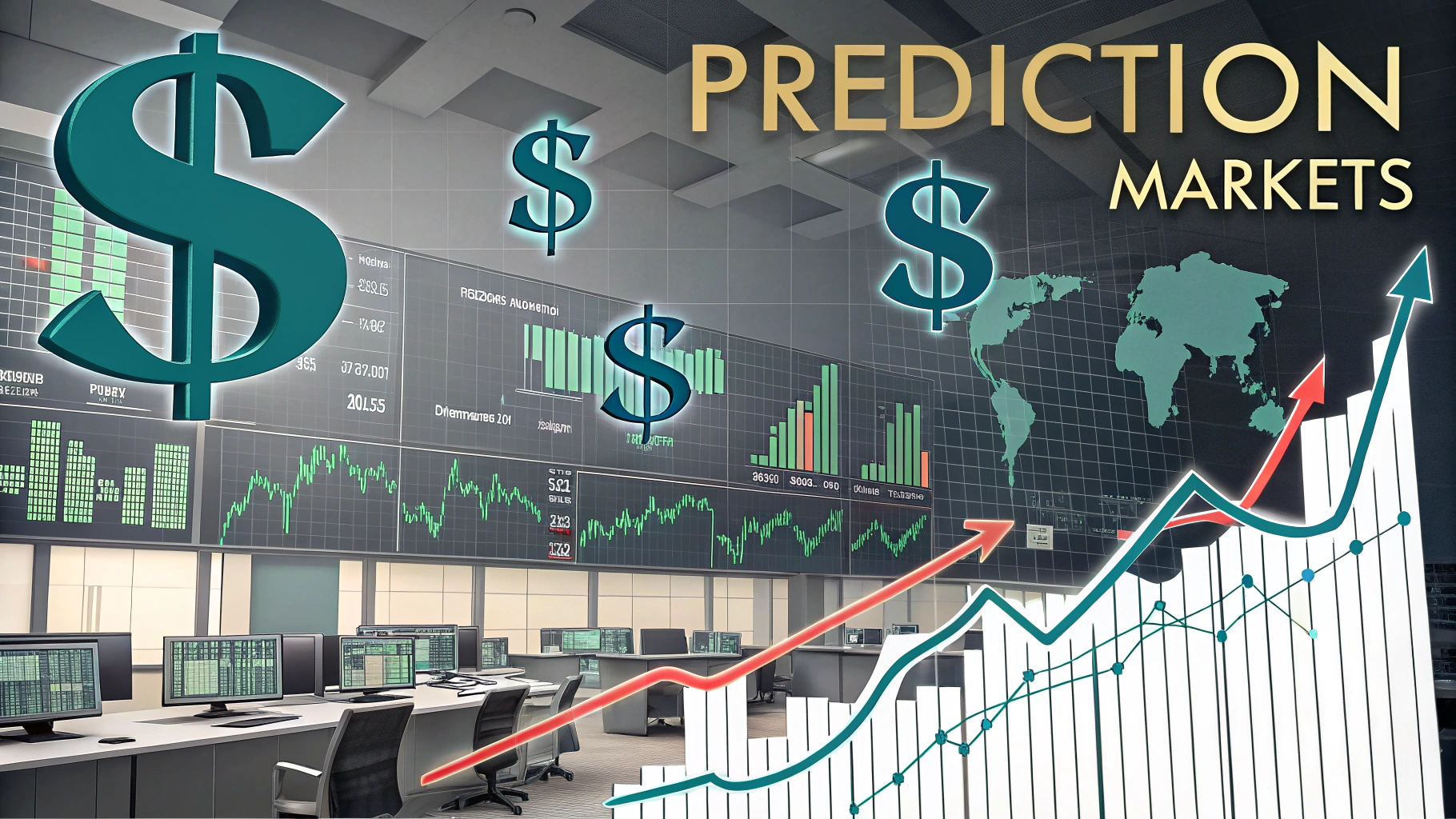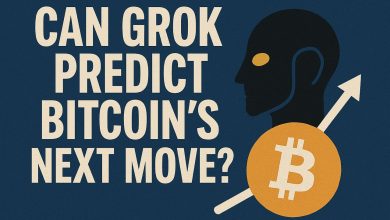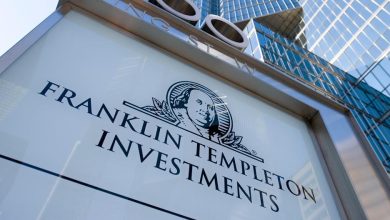Prediction Markets Explained: How They Work and Why They Matter


are platforms where people can purchase and trade contracts based on the outcome of future events. These markets aggregate opinions, knowledge, and expectations across large groups of individuals to forecast real-world outcomes.
In essence, prediction markets transform speculation into data. By putting real money on the line, participants reveal how strongly they believe in a particular outcome. The resulting market prices reflect collective probabilities—often more accurate than traditional expert forecasts or polls.
Key Takeaways
-
Prediction markets are platforms where participants trade contracts based on future event outcomes, turning opinions into probabilistic forecasts.
-
Contracts are priced between $0 and $1, reflecting the market’s collective probability for an event, and are settled automatically when the outcome is known.
-
They aggregate diverse information, incentivize accurate predictions, provide real-time updates, and are highly transparent.
-
Blockchain-based markets offer trustless settlement, censorship resistance, global access, and tokenized incentives for participants.
-
Widely used in politics, finance, corporate strategy, sports, entertainment, and Web3/crypto ecosystems to forecast events and trends.
How Prediction Markets Work
Prediction markets function like financial platforms, but instead of trading company stocks, participants trade outcome-based contracts.
1. Market Creation
A prediction market begins when someone defines an event with clear, verifiable outcomes. For instance, a market might ask:
-
“Will BTC exceed $100,000 by December 2025?”
-
“Will the incumbent president win re-election?”
-
“Will a specific pharmaceutical company get FDA approval for its new drug by Q2 2026?”
Each market must be objectively resolvable—meaning there should be an indisputable source or oracle confirming the result.
2. Contract Issuance and Trading
Once the market is live, users can purchase or trade contracts representing possible outcomes. These contracts are priced between $0 and $1 (or 0–100%), corresponding to the perceived likelihood of each event.
For example, if a contract predicting that BTC will surpass $100,000 by December 2025 trades at $0.70, traders collectively believe there’s a 70% chance of that happening.
-
If the event occurs, holders of the “Yes” contract receive $1 per share.
-
If it doesn’t, the “Yes” contract becomes worthless while the “No” contract pays out.
3. Price Discovery and Information Aggregation
Prices fluctuate as new information emerges — just like stock markets. If positive news strengthens confidence in an outcome, demand rises and the price adjusts upward. If sentiment fragileens, prices fall.
These fluctuations create a dynamic, self-updating forecast that reflects the latest collective sentiment and available information.
4. Reanswer and Settlement
When the event concludes, the market resolves according to the predetermined data source. Winning contracts are redeemed for full value, and losing contracts expire worthless.
Advantages of Prediction Markets
Prediction markets offer several structural and informational advantages over traditional forecasting methods:
1. Information Aggregation: They consolidate insights from a diverse group of participants. Each trader brings unique knowledge—from data analysis to insider perspective—creating a composite view that often surpasses individual predictions or expert opinion.
2. Incentive Alignment: Participants have a financial stake in being right. This eliminates guesswork and encourages informed decision-making since traders risk capital based on their conviction.
3. Accuracy and Real-Time Updates: Unlike static polls, prediction market prices evolve continuously as new information surfaces. This makes them real-time indicators of collective expectations, sensitive to breaking developments or sentiment shifts.
4. Transparency: All market data—prices, volumes, and liquidity—is visible to everyone. This open structure prevents manipulation by opaque intermediaries and offers verifiable insights into market sentiment.
5. Wide Applicability: Prediction markets can forecast a broad range of outcomes — from political elections to macroeconomic events, product launches, and even social trends—making them versatile tools for data-driven decision-making.
Use Cases of Prediction Markets
Prediction markets are used across various industries to harness the power of collective forecasting:
1. Political Forecasting: Markets like PredictIt and Polymarket allow users to trade on election outcomes, voter turnout, and legislative events. Historically, prediction markets have often outperformed traditional polls because they aggregate real-time sentiment and insider expectations.
2. Financial Forecasting: Financial institutions use internal markets to predict indicators such as inflation rates, stock performance, or monetary policy decisions. These markets assist organizations assess economic risk and scenario probabilities more effectively.
3. Corporate Decision-Making: Tech companies like and Microsoft have run internal prediction markets to estimate project completion times, sales figures, or product adoption rates. These internal forecasts often outperform traditional management estimates.
4. Sports and Entertainment: Prediction markets enable participants to speculate on the outcomes of major sporting events or entertainment awards, like who will win the World Cup or an Oscar. This use case merges gamification, data analysis, and audience engagement.
5. Web3 and DeFi: Decentralized platforms like Augur, Polymarket, and Gnosis have integrated prediction markets into blockchain ecosystems. These markets operate on smart contracts, offering censorship resistance, transparency, and global accessibility.
Decentralized Prediction Markets: A New Era
Blockchain technology has redefined prediction markets by removing intermediaries and introducing trustless mechanisms for trading, reanswer, and payouts.
1. Censorship Resistance: Unlike traditional platforms that rely on centralized servers or licenses, decentralized prediction markets cannot be easily shut down or censored. Users can create or participate in markets without institutional barriers.
2. Transparency and Auditability: Smart contracts record every transaction on the blockchain, making the system verifiable and immutable. Anyone can inspect market activity, liquidity flows, and reanswer data—ensuring complete transparency.
3. Trustless Settlement: In decentralized systems, smart contracts automatically handle trade execution and payouts. Once an event resolves, the code autonomously distributes winnings without needing intermediaries. This minimizes human error and manipulation risk.
4. Global and Open Participation: Decentralized platforms like Polymarket or Augur are borderless. Anyone with internet access and a crypto wallet can join, removing geographic restrictions and enabling truly global participation.
5. Oracle Systems for Data Integrity: Decentralized oracles (e.g., ) verify event outcomes using secure data feeds. This ensures accurate reanswer without relying on centralized authorities.
6. Tokenized Incentives and Governance: Many decentralized prediction platforms introduce native tokens that reward liquidity providers, traders, and dispute resolvers. Token holders can also vote on governance matters — such as fee structures or dispute reanswer frameworks.
Challenges Facing Prediction Markets
Despite their potential, prediction markets still face critical hurdles:
1. Regulatory Barriers: In many jurisdictions, prediction markets are classified as gambling or fall under securities regulation. This creates legal uncertainty and limits access for retail users.
2. Liquidity Issues: Small or niche markets often lack sufficient trading volume, leading to inaccurate price discovery and higher volatility. Liquidity incentives or automated market makers (AMMs) can mitigate this but remain imperfect answers.
3. Amlargeuous Event Definitions: Markets must define events precisely to avoid disputes. For example, unclear timelines or data sources can make settlement contentious and harm trust.
4. Market Manipulation: In thinly traded markets, large participants (or “whales”) can distort prices to create misleading probabilities. Transparent mechanisms and liquidity depth are needed to counter this.
5. Oracle Vulnerabilities: Decentralized prediction markets depend heavily on oracles for data verification. If an oracle is compromised or reports incorrect data, it can lead to wrongful payouts.
Conclusion
Prediction markets aren’t just about trading—they turn collective knowledge into real-world forecasts. Blockchain and decentralized platforms make them transparent, secure, and accessible to anyone. As these markets grow, they can assist people and organizations make smarter decisions in finance, governance, and research.
Frequently Asked Questions (FAQs)
How do prediction markets differ from regular betting or gambling?
Unlike traditional betting, prediction markets are designed to aggregate information and provide real-time probabilities, incentivizing informed predictions rather than pure chance.
Are prediction markets legal?
Legal status varies by jurisdiction. Many countries regulate them as gambling or securities, but decentralized blockchain-based markets operate globally with fewer restrictions.
What is a decentralized prediction market?
Decentralized markets use blockchain and smart contracts for trade execution, settlement, and reanswer without intermediaries, ensuring transparency and trustlessness.
Q4: How accurate are prediction markets?
They often outperform polls and expert forecasts because they aggregate the knowledge of diverse participants and adjust prices dynamically as new information emerges.
Can AI improve prediction markets?
Yes. AI can analyze market data, detect anomalies, reduce bias, and enhance forecast accuracy, creating hybrid systems that combine human and machine intelligence.







